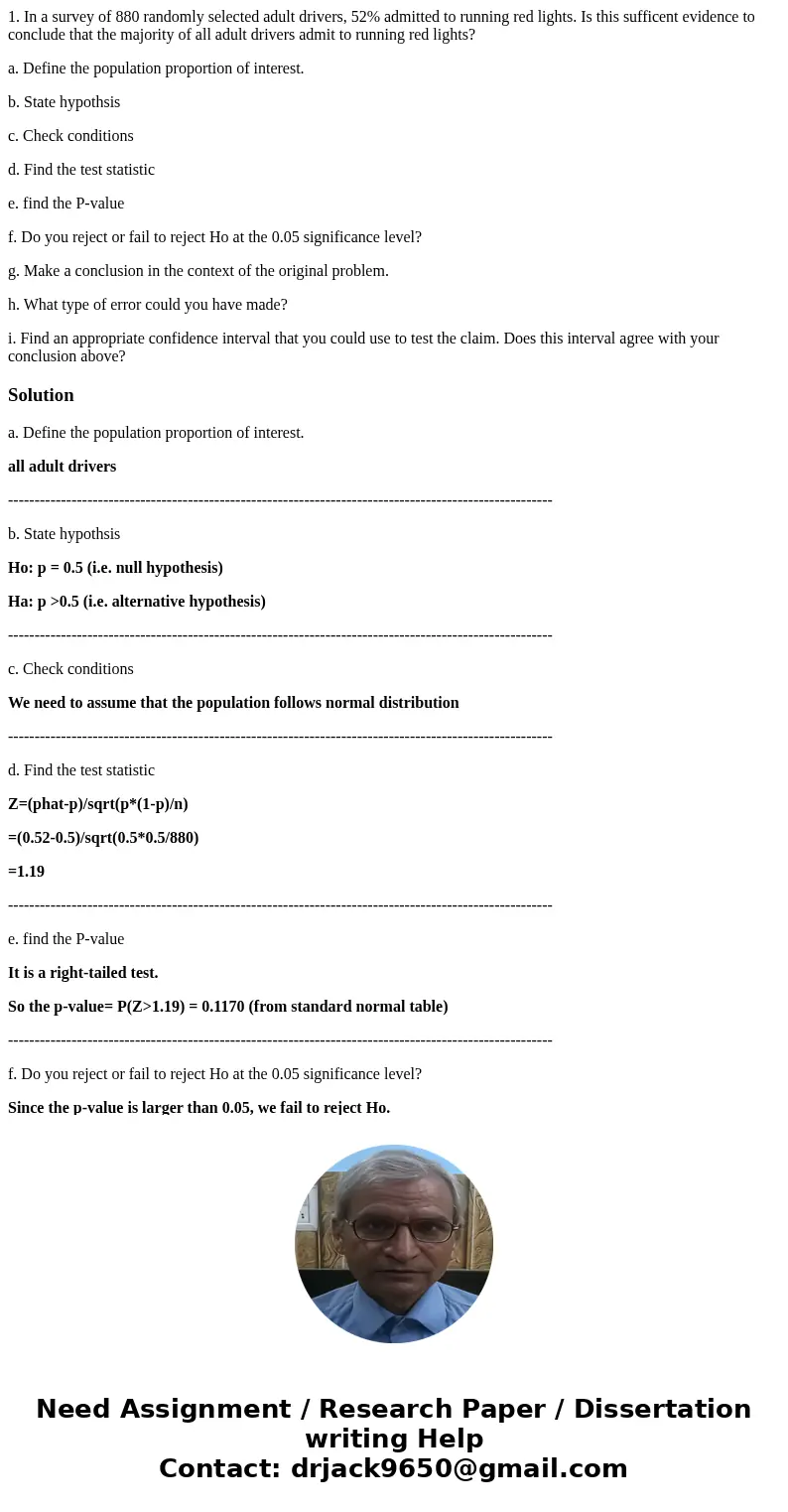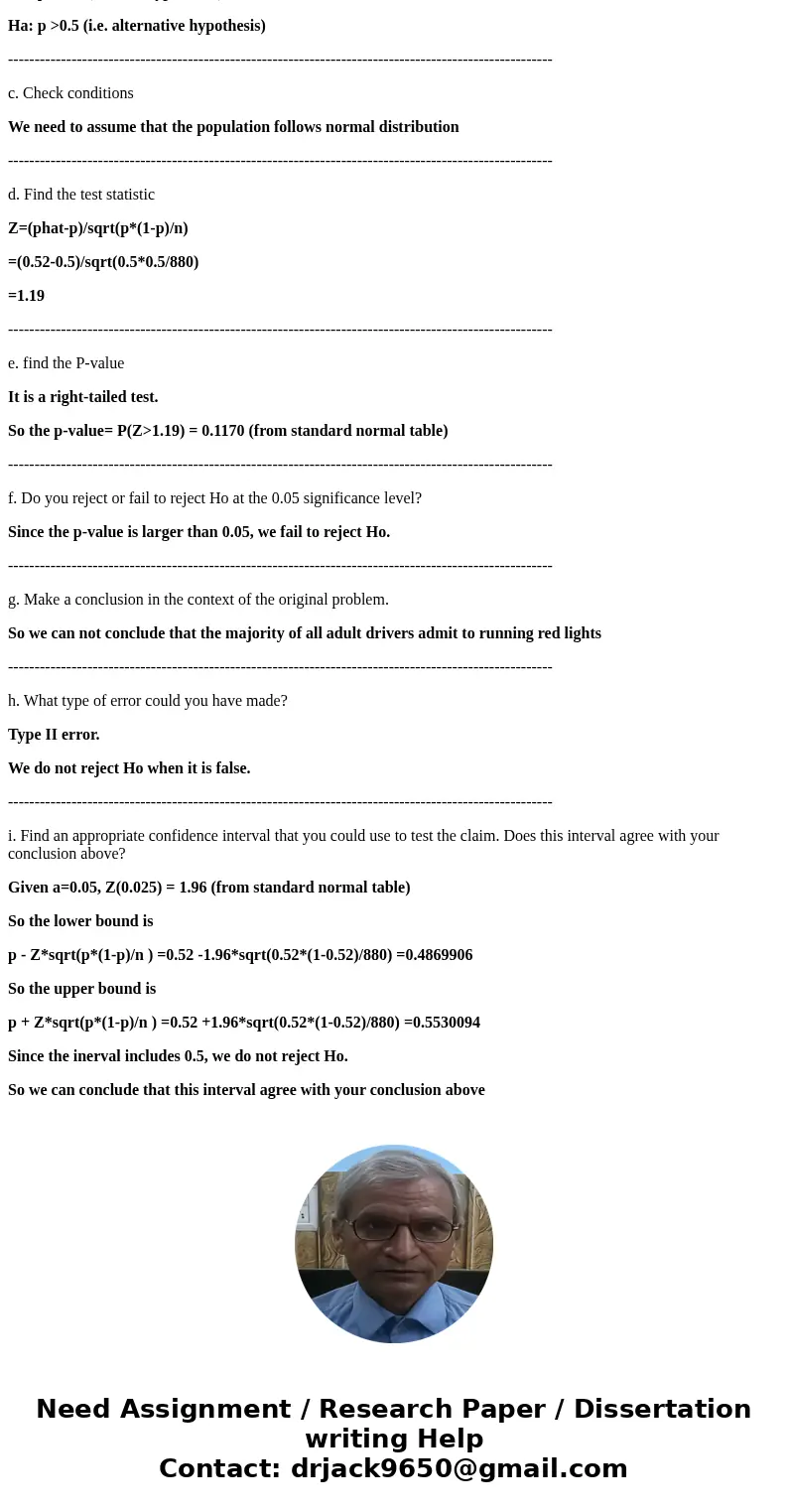1 In a survey of 880 randomly selected adult drivers 52 admi
1. In a survey of 880 randomly selected adult drivers, 52% admitted to running red lights. Is this sufficent evidence to conclude that the majority of all adult drivers admit to running red lights?
a. Define the population proportion of interest.
b. State hypothsis
c. Check conditions
d. Find the test statistic
e. find the P-value
f. Do you reject or fail to reject Ho at the 0.05 significance level?
g. Make a conclusion in the context of the original problem.
h. What type of error could you have made?
i. Find an appropriate confidence interval that you could use to test the claim. Does this interval agree with your conclusion above?
Solution
a. Define the population proportion of interest.
all adult drivers
-------------------------------------------------------------------------------------------------------
b. State hypothsis
Ho: p = 0.5 (i.e. null hypothesis)
Ha: p >0.5 (i.e. alternative hypothesis)
-------------------------------------------------------------------------------------------------------
c. Check conditions
We need to assume that the population follows normal distribution
-------------------------------------------------------------------------------------------------------
d. Find the test statistic
Z=(phat-p)/sqrt(p*(1-p)/n)
=(0.52-0.5)/sqrt(0.5*0.5/880)
=1.19
-------------------------------------------------------------------------------------------------------
e. find the P-value
It is a right-tailed test.
So the p-value= P(Z>1.19) = 0.1170 (from standard normal table)
-------------------------------------------------------------------------------------------------------
f. Do you reject or fail to reject Ho at the 0.05 significance level?
Since the p-value is larger than 0.05, we fail to reject Ho.
-------------------------------------------------------------------------------------------------------
g. Make a conclusion in the context of the original problem.
So we can not conclude that the majority of all adult drivers admit to running red lights
-------------------------------------------------------------------------------------------------------
h. What type of error could you have made?
Type II error.
We do not reject Ho when it is false.
-------------------------------------------------------------------------------------------------------
i. Find an appropriate confidence interval that you could use to test the claim. Does this interval agree with your conclusion above?
Given a=0.05, Z(0.025) = 1.96 (from standard normal table)
So the lower bound is
p - Z*sqrt(p*(1-p)/n ) =0.52 -1.96*sqrt(0.52*(1-0.52)/880) =0.4869906
So the upper bound is
p + Z*sqrt(p*(1-p)/n ) =0.52 +1.96*sqrt(0.52*(1-0.52)/880) =0.5530094
Since the inerval includes 0.5, we do not reject Ho.
So we can conclude that this interval agree with your conclusion above


 Homework Sourse
Homework Sourse